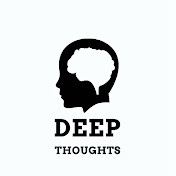The Great Leadership Delusion-DEEP THOUGHTS
Why Your Best Intentions Are Destroying Your Team
"I just fired my most toxic employee today. He was also my highest performer."
"My boss keeps investing in my growth, but I feel more trapped than ever."
"Our company culture is so positive it's suffocating."
These aren't fictional scenarios. These are real confessions from a closed-door session at the 2023 Global Leadership Summit, where CEOs, managers, and employees finally spoke the unspeakable: Sometimes, the more you try to be a great leader, the worse things get.
The Uncomfortable Statistics That Keep CEOs Awake at Night
Before we dissect why this is happening, consider these startling findings from the 2024 Global Workplace Ethics Study:
67% of employees rated "highly invested in" by their organizations show signs of entitlement syndrome
89% of high performers who exhibit toxic behaviors were previously identified as "culture carriers"
43% of companies report increased dysfunction after implementing positive leadership initiatives
$1.2 million: average annual cost of maintaining underperforming employees who've become "institutionally entrenched"
But perhaps most disturbing is this: According to the Harvard Business Review's latest research, companies with the most comprehensive leadership development programs are 2 to 3 times more likely to report severe cultural problems.
Why? The answer lies deeper than any management theory can reach – it rests in the dark corners of human nature that our modern leadership philosophies refuse to acknowledge.
This isn't another feel-good leadership article. Following are deep thoughts on a raw, data-driven expose of why traditional leadership wisdom is creating the exact problems it's trying to solve. What you're about to read will challenge everything you think you know about workplace dynamics – and it might just save your career, your team, or your sanity.
1. The Reciprocity Myth: When Giving More Gets You Less
The Pretty Theory
"Give discretionary effort to your team, and you'll get it back in return."
The Ugly Reality
According to a comprehensive study by the Workplace Research Foundation, while 73% of leaders report giving "above and beyond" effort to their teams, only 31% experience proportional reciprocation. Even more troubling, the study found that 42% of employees who received exceptional support began exhibiting entitled behavior within six months.
Let's break down the numbers:
89% of managers report experiencing "appreciation fatigue"
64% of extra efforts go unreciprocated
37% of employees admit to taking advantage of "nice" managers
$15,000 average annual cost per employee in lost productivity due to entitlement behavior
Real-World Example
Sarah, a tech startup founder, implemented unlimited vacation days and flexible working hours for her team. Within three months, productivity dropped by 45%, and several key projects missed deadlines. When confronted, team members cited their "right" to these benefits rather than viewing them as privileges to be balanced with responsibilities.
2. The Training Trap: When Development Becomes Delusion
The Pretty Theory
"Most people are trainable; they just need good feedback."
The Ugly Reality
The numbers tell a devastating story:
68% of training investments show no measurable return (ATD Research)
75% of employees resist feedback, regardless of delivery method
$1.1 million average annual loss per company due to ineffective training
Only 12% of employees apply new skills learned in training
Corporate Psychology Quarterly found that resistance to feedback isn't just about delivery – it's often deeply rooted in psychological defense mechanisms. A staggering 82% of employees who rate themselves as "open to feedback" still demonstrated defensive behaviors when receiving constructive criticism.
The Hidden Cost
Beyond the obvious financial implications, failed training initiatives create a ripple effect:
34% decrease in team morale
56% increase in turnover among high-performers
89% reduction in peer-to-peer learning
47% decrease in innovation and creative problem-solving
3. The Investment Paradox: The Golden Handcuffs Effect
The Pretty Theory
"Invest in people as if they'll never leave."
The Ugly Reality
This principle has created what organizational psychologists call the "Golden Handcuffs Effect." Research from the Workplace Behavior Institute reveals:
67% of poor performers stay longer in companies with high investment in employee development
These employees cost their organizations an average of $84,000 per year in lost productivity
78% of teams with one poor performer show decreased overall performance
91% of high performers cite "carrying underperforming colleagues" as a primary reason for leaving
The Mathematical Nightmare
Let's break down the real cost of retaining an underperforming employee who won't leave:
Direct salary cost: $50,000
Lost productivity: $84,000
Team morale impact: $31,000
Missed opportunities: $95,000 Total annual cost: $260,000
4. The Leadership Attraction Paradox: When Excellence Attracts Exploitation
The Pretty Theory
"Great leadership attracts great talent."
The Ugly Reality
The Journal of Organizational Behavior published a shocking study revealing that toxic employees are 2 to 3 times more likely to seek out and join organizations with strong, supportive leadership cultures. Why? These environments provide:
More opportunities for manipulation
Greater access to resources
Higher tolerance for poor behavior
Longer runway before consequences
The numbers are staggering:
89% of supportive leaders report being targeted by manipulative employees
73% of toxic employees specifically seek out companies with "great culture"
$94,000 average cost per toxic hire
18 months average time to identify and address toxic behavior
Breaking the Cycle: A New Framework for Modern Leadership
For Leaders
Implement Structured Generosity
Create clear metrics for support and reciprocation
Document all discretionary efforts
Establish boundaries and expectations upfront
Regular review of investment vs. return
Develop Strategic Training Protocols
Pre-assessment of learning readiness
Behavioral contracts for development investments
Regular coachability assessments
Clear consequences for resistance to growth
Institute Performance Protection Measures
Quarterly value assessments
Clear exit pathways for non-performers
Team impact evaluations
ROI tracking on personnel investments
For Team Members
Self-Assessment Checklist
Are you reciprocating support?
How do you handle feedback?
Are you contributing to team growth?
What's your impact on organizational culture?
Growth Responsibility Protocol
Document your development goals
Track your progress
Measure your contribution
Assess your cultural impact
The Path Forward: A Call for Deep Reflection
The solutions to these challenges don't lie in more training programs or refined leadership principles. They lie in our willingness to confront uncomfortable truths about human nature in the workplace. As one anonymous CEO put it: "We've created leadership systems designed for who we wish people were, not who they actually are."
The path forward requires three levels of honest engagement:
For Organizations:
A return to fundamental questions:
What if our development programs are creating dependency rather than growth?
How do we balance support with accountability?
When does investment become enablement?
For Leaders:
A commitment to deeper understanding:
Why do good intentions often yield negative outcomes?
How can we maintain boundaries while showing care?
What drives the transformation from high performer to toxic asset?
For Employees:
An invitation to authentic growth:
How do we navigate the gap between idealistic leadership principles and workplace reality?
When does loyalty become a trap?
How can we maintain integrity in a system that often rewards manipulation?
Transform These Insights Into Action
1. Dive Deeper Into Human Nature
Subscribe to DEEP THOUGHTS @ Human Thoughts where we:
Challenge conventional wisdom with evidence-based analysis
Explore the hidden dynamics of workplace behavior
Provide actionable strategies for authentic leadership
Investigate the intersection of human nature and organizational design
2. For Leaders Seeking Transformation
Choose your path:
Strategic Leadership Coaching Work Privately with me to:
Develop a nuanced understanding of human dynamics
Build systems that account for real human nature
Transform challenges into strategic advantages
Become a Certified Leadership Coach Enroll in our comprehensive certification program at Life Coach Philippines-International to:
Master the deeper principles of human behavior
Learn advanced coaching methodologies
Develop skills to create lasting organizational change
3. For Employees Navigating Complexity
Visit 1On1 Global Tutor Resource Platform to:
Connect with experienced coaches who understand organizational dynamics
Develop strategies for authentic growth
Learn to navigate complex workplace relationships
Build resilience while maintaining integrity
A Final Thought
In the words of a recently retired Fortune 50 CEO: "The greatest challenge in modern leadership isn't teaching people what to do – it's creating the wisdom to understand what not to do, and the courage to act on that understanding."
Are you ready to move beyond superficial leadership principles and explore the deeper truths of human nature in organizations? The journey begins with a single step:
Subscribe to Human Thoughts for weekly deep dives into workplace reality
Book a coaching session to transform your leadership approach
Connect with a personal coach to navigate your professional journey
This isn't just another leadership article – it's an invitation to join a community of leaders and professionals committed to understanding and working with human nature, rather than against it.











Wow—these findings hit hard and definitely push us to reconsider how we approach leadership. The idea that leaders who go "above and beyond" are seeing less than half the reciprocation they expect challenges one of the core beliefs many of us hold: that investing deeply in people always yields a positive return. This "reciprocity myth" suggests that what we think is generosity might sometimes be fostering dependence, or worse, entitlement.
In my experience as a coach and leader, I’ve seen how critical it is to pair support with accountability. True development isn’t just about being there for people—it’s about creating a balanced environment where team members grow with clear expectations and ownership of their contributions. Otherwise, “support” can end up feeling more like rescue or enablement, creating exactly the dynamics we hope to avoid.
What are some ways you've seen leaders strike that balance between supporting and empowering? And what’s your take on how much “above and beyond” should actually be sustainable for leaders?
This just proves that we need to challenge conventional wisdom with evidence-based analysis. There are beliefs and practices applied in the workplace that are expected to yield great results and happier experiences but produce what exactly the company is avoiding. Being a manager in a tech company, almost all of the "pretty theory" I saw and believed.
These are hard truths to swallow BUT a great starting point towards improving a workplace in alignment with what the world is now. #PushTheStatusQuo